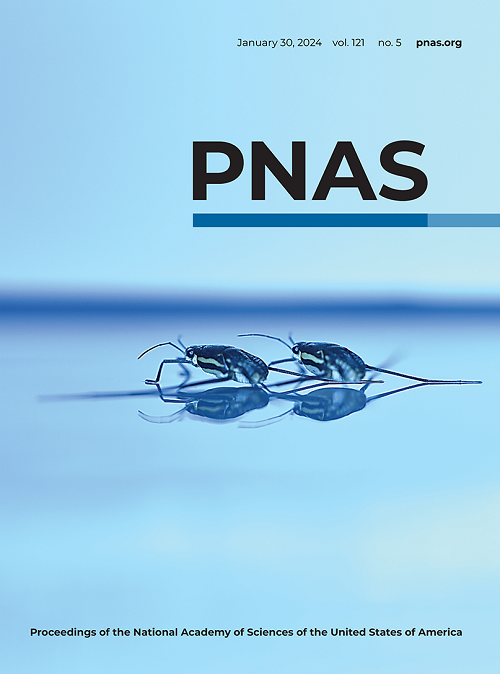病理生理学上相关的双酚S暴露通过破坏棕色脂肪组织调节的能量代谢来加速衰老
IF 9.4
1区 综合性期刊
Q1 MULTIDISCIPLINARY SCIENCES
Proceedings of the National Academy of Sciences of the United States of America
Pub Date : 2025-06-02
DOI:10.1073/pnas.2420437122
引用次数: 0
摘要
双酚A (BPA)替代品被广泛用作食品接触材料和消费品,但BPA替代品的病理生理相关浓度对衰老的影响尚不清楚。在这项研究中,我们使用秀丽隐杆线虫(C. elegans)研究了五种BPA替代品[双酚S (BPS),双酚B,双酚F (BPF),四甲基BPF和4,4 ' -(全氟丙烷-2,2-二基)双酚]在衰老过程中病理生理相关暴露水平的影响,并通过小鼠模型研究了其潜在机制。我们的研究结果表明,在5种BPA替代品中,暴露于与病理生理相关的BPS浓度(300、450和600 nM)会加速秀丽隐杆线虫的衰老。在小鼠中,暴露于病理生理相关浓度的BPS (125 μg/kg/天,从4至20月龄)同样会减少寿命和健康跨度,并加速多个组织的衰老表型。进一步的研究表明,长期接触BPS导致BPS在棕色脂肪组织(BAT)中的积累明显高于其他器官。BAT的RNA测序分析显示,BPS通过多种途径加速BAT的衰老。重要的是,bps暴露小鼠的BAT移植到bps初始小鼠中加速了受体的衰老。相反,将未暴露小鼠的BAT移植到bps暴露小鼠体内,可显著改善其代谢状态,延缓衰老。这些发现阐明了BPS病理生理相关浓度对衰老过程的影响,并表明这些影响可能是通过破坏BAT功能介导的。本文章由计算机程序翻译,如有差异,请以英文原文为准。
Pathophysiologically relevant bisphenol S exposure accelerates aging by disrupting brown adipose tissue–regulated energy metabolism
Bisphenol A (BPA) substitutes are widely used as food contact materials and consumer products, while the effects of pathophysiologically relevant concentrations of BPA substitutes on aging remain unclear. In this study, we used Caenorhabditis elegans ( C. elegans ) to investigate the effects of five BPA substitutes [bisphenol S (BPS), bisphenol B, bisphenol F (BPF), tetramethyl BPF, and 4,4′-(Perfluoropropane-2,2-diyl)diphenol] at pathophysiologically relevant exposure levels during aging and examined the underlying mechanisms using a mouse model. Our results indicated that, among the five BPA substitutes, exposure to pathophysiologically relevant concentrations of BPS (300, 450, and 600 nM) accelerated aging in C. elegans . In mice, exposure to a pathophysiologically relevant concentration of BPS (125 μg/kg/day, from 4 to 20 mo of age) similarly reduces the life and health span and accelerates aging phenotypes in multiple tissues. Further investigations demonstrated that long-term BPS exposure resulted in a significantly higher accumulation of BPS in brown adipose tissue (BAT) than in other organs. RNA sequencing analysis of BAT revealed that BPS accelerates BAT aging through multiple pathways. Importantly, transplantation of BAT from BPS-exposed mice into BPS-naive mice accelerated aging in recipients. Conversely, transplantation of BAT from unexposed mice into BPS-exposed mice significantly improved their metabolic status and delayed aging. These findings elucidate the impact of pathophysiologically relevant concentrations of BPS on the aging process and suggest that these effects are likely mediated through the disruption of BAT function.
求助全文
通过发布文献求助,成功后即可免费获取论文全文。
去求助
来源期刊
CiteScore
19.00
自引率
0.90%
发文量
3575
审稿时长
2.5 months
期刊介绍:
The Proceedings of the National Academy of Sciences (PNAS), a peer-reviewed journal of the National Academy of Sciences (NAS), serves as an authoritative source for high-impact, original research across the biological, physical, and social sciences. With a global scope, the journal welcomes submissions from researchers worldwide, making it an inclusive platform for advancing scientific knowledge.

 求助内容:
求助内容: 应助结果提醒方式:
应助结果提醒方式:


